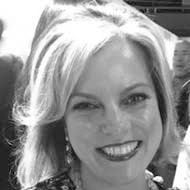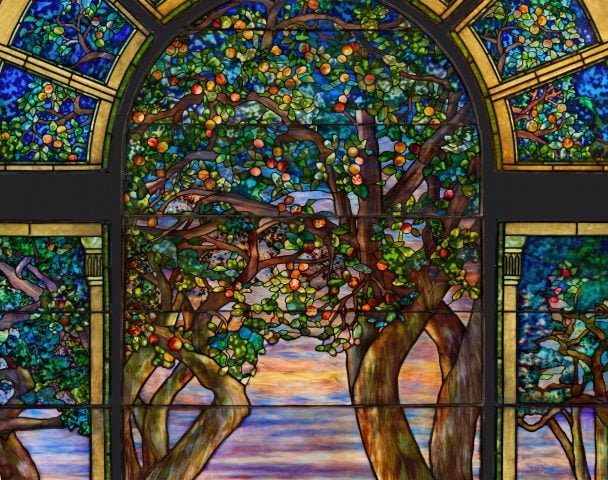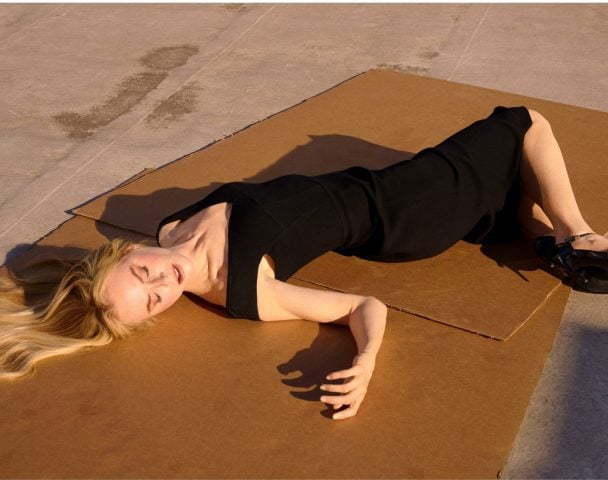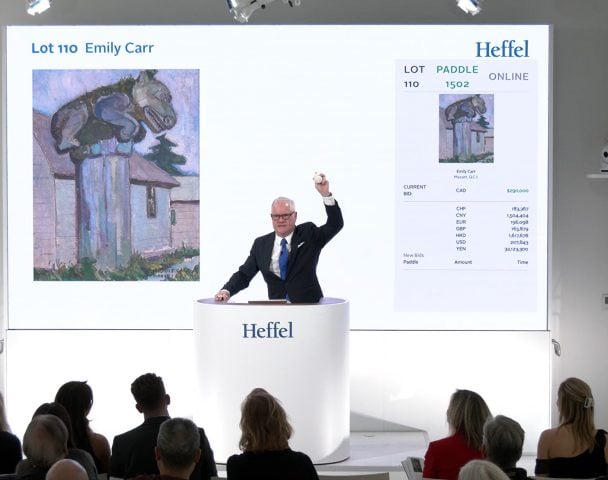Art World
The Hort Legacy: How New York’s Boldest Art Collectors Are Preserving Their Vision
Susan and Michael Hort have transformed personal loss and a keen eye for emerging talent into a collection of over 5,000 works. Now, they’re cementing their legacy with a private museum at Art Omi Pavilions.
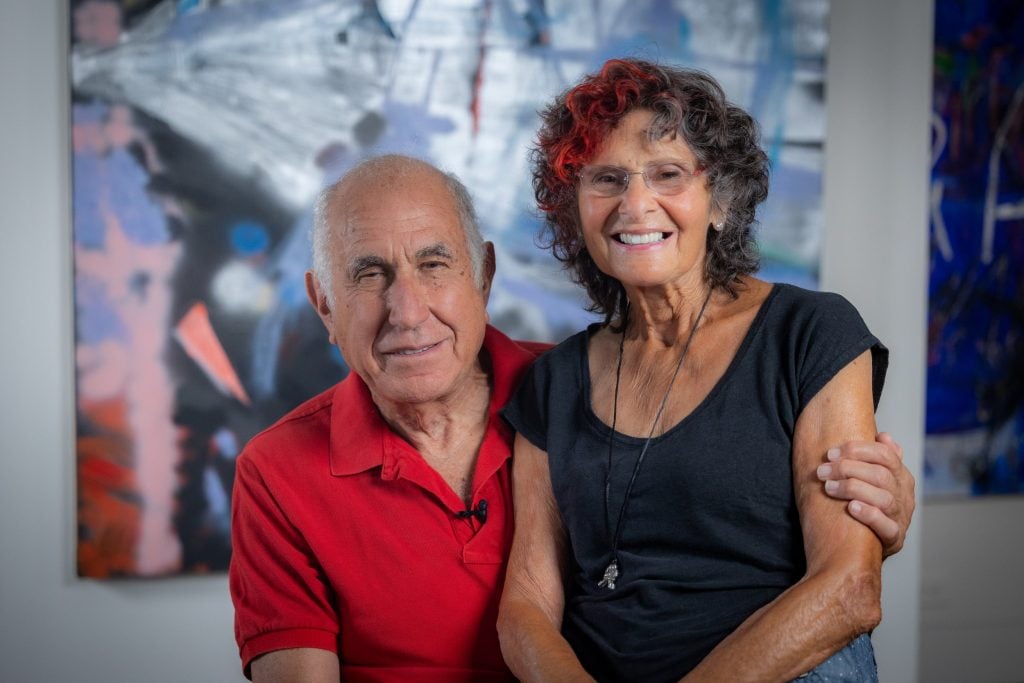
Susan and Michael Hort may be New York’s most indefatigable collectors of emerging art. They’ve taken risks on acquiring works by unknown artists since 1985, buying far, wide, and deep. You name it—they’ve got it. From a hot young star of the moment to top artists like Cindy Sherman, and Marlene Dumas. Art fills their triplex in Tribeca as well as 7,000 square feet of storage in New York and New Jersey. But as the Horts are getting older, there’s an urgent matter at hand.
“What will we do with all our art?” Susan asked last week, standing in her living room, lined with works by some 30 artists, including new paintings by Cristina BanBan and Arjan Martins. “You either sell it or give it away. We don’t want to sell the art at auction. And if you give it to a museum, they stick it in the basement. Our kids, there are things they like, but there’s too much art and it’s too big. They can’t take it all.“
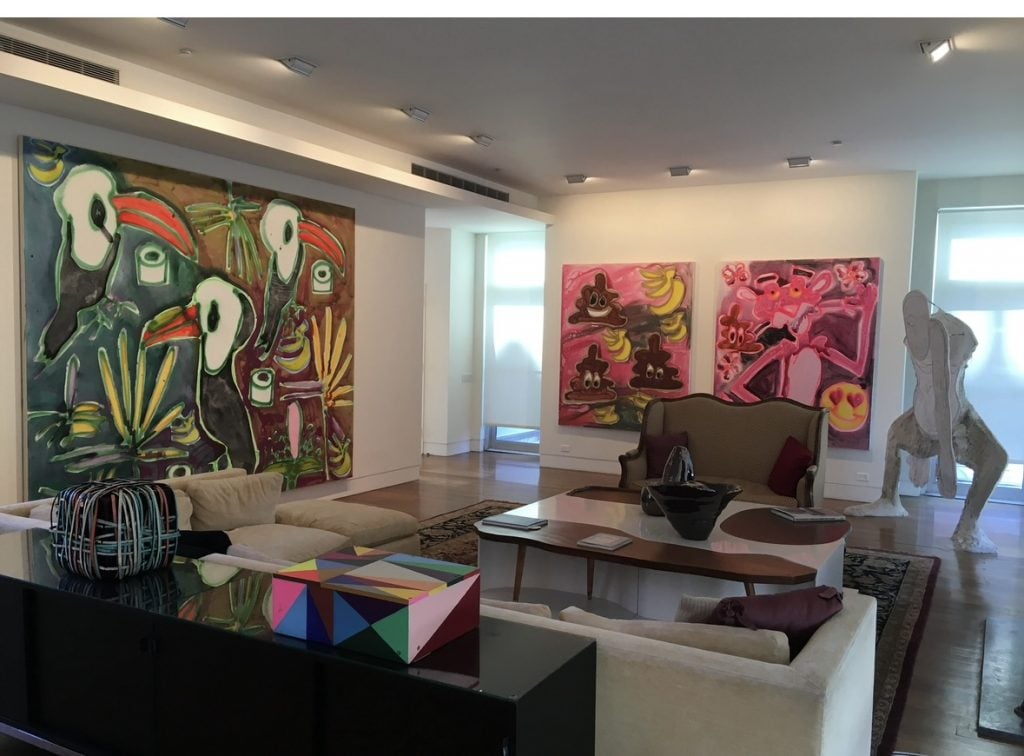
An interior view of the Hort’s art-filled Tribeca duplex. Courtesy of the Horts.
Collecting big, tough art has been the saving grace for the couple as they lived through two personal tragedies. In 1995, their 30-year-old daughter Rema Hort Mann, who was a founding member of the New Museum young collectors group, died of stomach cancer. In her memory, the family established a foundation to support emerging artists and cancer patients, giving away more than $9 million to-date. For nearly three decades, Rema’s younger brother, Peter Hort, who worked as a judge by day, guided the foundation’s programs and initiatives, which included the prestigious annual “Emerging Artist Grant.” But in 2022, his life was cut short by cancer when he was 51.
Peter was the most involved in art of the three surviving Hort children, his father said. There’s a chance that other family members may step up. Jamie Cohen Hort, Peter’s widow, is an art adviser who has curated the Hort Family Collection for more than a decade. His daughter Rema Hort, named after his late sister, works at Spruéth Magers gallery in London.

The in-progress Hort pavilion at Art Omi Pavilions. Renderings: BKSK Architects.
The Horts are not the only family grappling with questions of legacy. The past two decades have seen a private art museum boom all over the world. Now, “the Great Wealth Transfer” is under way with the estimated $84 trillion poised to change hands by 2045. Art is among the assets that have grown in value dramatically.
Susan and Michael found an answer to these questions 142 miles north of the city, where real estate developer and art collector Francis Greenburger is turning 190 acres into a legacy campus for artists and collectors. His pitch centers on the ability to control how their vision will live on in perpetuity. Located in Chatham, New York, the project is called Art Omi Pavilions, a shoutout to Greenburger’s nearby sculpture park, Art Omi. It will comprise 18 individual, stand-alone “pavilions,” five of which broke ground in September, including sculptor Alice Aycock, the Horts and the Institute for Studies of Latin American Art.

The in-progress Hort pavilion at Art Omi Pavilions. Renderings: BKSK Architects.
“We are trying to create a visitor experience that’s greater than the sum of its parts,” Greenburger said. “Each of the pavilion sponsors will attract people who know about them, but then will lead to a cross-fertilization among all the exhibitors, which is the idea.”
Participants can realize their vision by marrying art, architecture, and landscape, according to Greenburger, CEO of Time Equities. He was inspired by the Barnes Foundation in Philadelphia, Donald Judd’s outpost in Marfa, Texas, and Mass MOCA wings, housing Sol LeWitt’s art and Andy Hall’s Anselm Kiefer paintings. He estimates the overall development will be about $60 million, with individual spaces ranging from about $2 million to $7.5 million for the Horts’ multi-story space, he said.
Having a private museum takes the pressure off Susan and Michael’s succession plans. “This is a way to keep the collection together and for the art to be seen,” Susan said. They have committed to staging two exhibitions a year in their 12,000-square-foot pavilion designed by BKSK Architects.
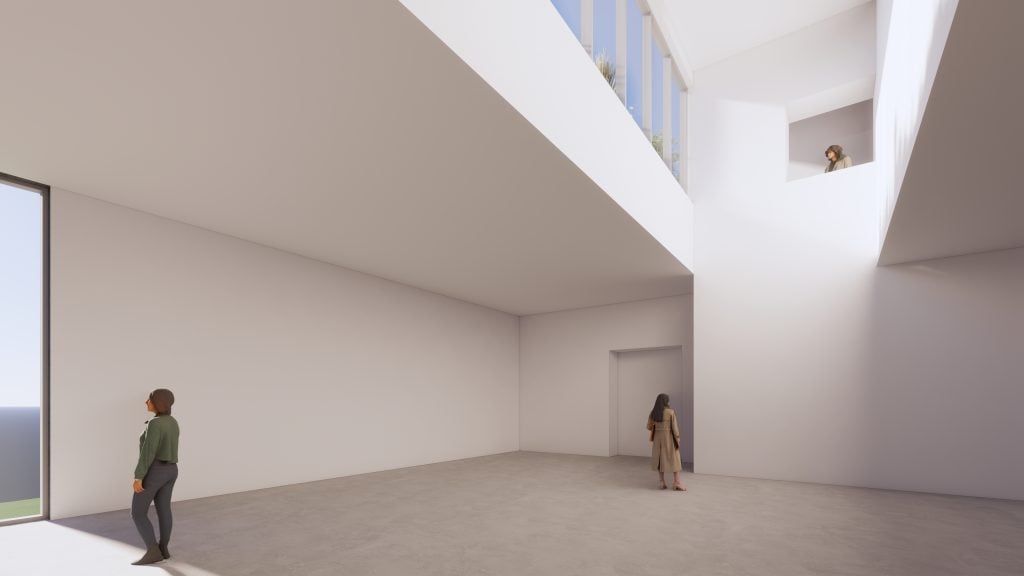
An interior view of the in-progress Hort pavilion at Art Omi Pavilions. Renderings: BKSK Architects.
Outsourcing the logistics was another attraction. “There’s a lot of infrastructure I don’t have to deal with,” Michael said, listing the visitors’ center and educational center. “If you do your own museum in the middle of nowhere, it’s your problem.”
The Horts were ready to scale up. For years before the pandemic, they would regularly open the doors of their Tribeca triplex to the art hoards during the Armory Show. Fellow collectors, artists, curators, writers swarmed the rooms, where an astounding number of paintings and sculptures reflected the changing trends in emerging art. Visitors would start on the ground floor, then take an elevator upstairs, where more art and rugelach pastries awaited.
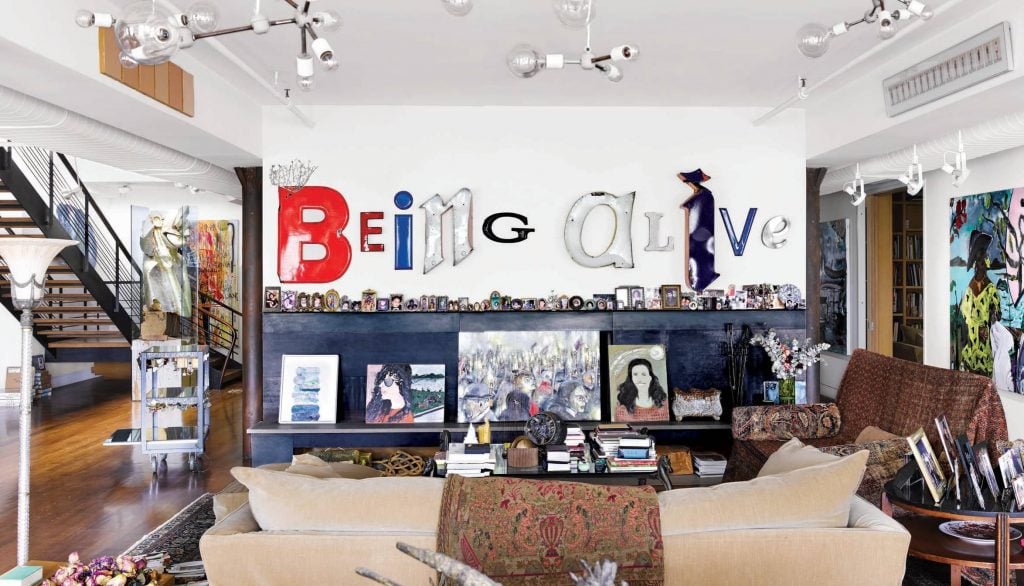
Jack Pierson’s artwork presides over the Horts’ living room. Courtesy of the Horts.
Most art would rotate annually, but there were a few constants: Pierson’s sign “Being Alive” above the fireplace was the first artwork the couple bought after their daughter died. A Sarah Sze installation is tucked away behind a door in a hallway. A sprawling constellation of smaller artworks in the couple’s bedroom. Large sculptures by Thomas Houseago and Matthew Monahan.
Whatever artist everyone was talking about that year, the Horts had. And not just one work. They had many. Take Nicole Eisenman, whose traveling retrospective of 100 paintings recently closed at the MCA Chicago. Twelve pieces, including four paintings, in the show were lent by the Horts.
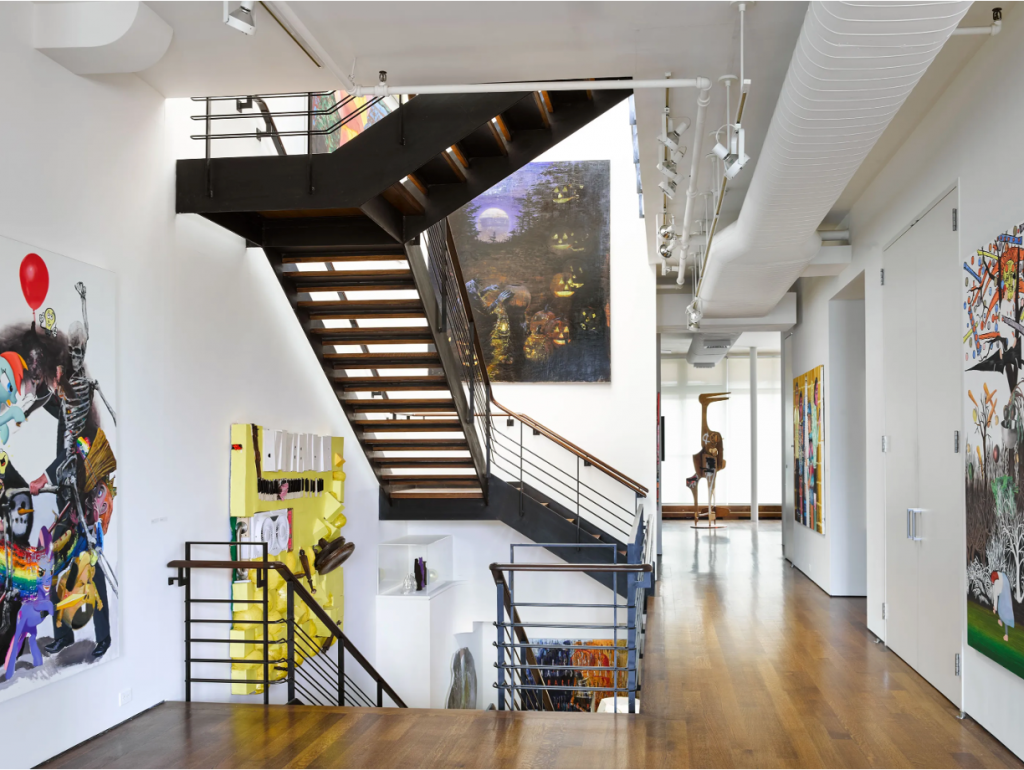
An interior view of the Hort’s art-filled Tribeca duplex. Courtesy of the Horts.
Years ago, in the late 1990s, David Zwirner offered the couple an opportunity to buy his hot new artist.
“Who?” Susan asked
“Neo Rauch,” the dealer responded.
“We have four,” she shrugged.
Michael tells these stories to illustrate how they’ve amassed more than 5,000 works of art. “We collect in depth,” he said last week. “If you buy one, we buy seven.” This year, like many other collectors, they scaled down. In their case, this mean buying only 85 artworks, Susan said.
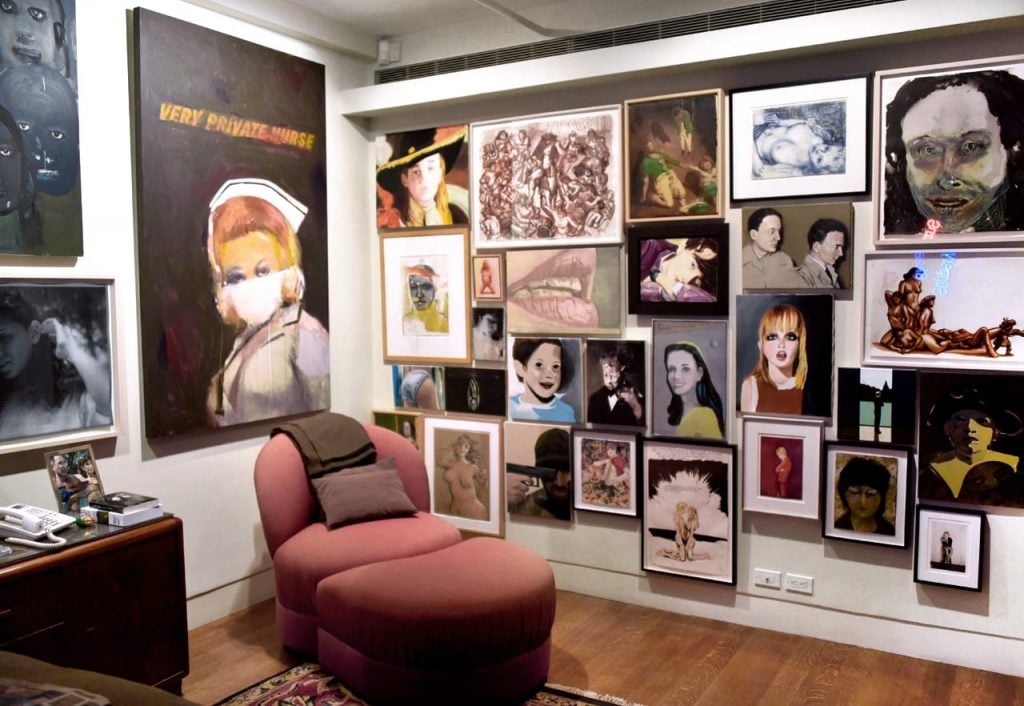
An interior view of the Hort’s art-filled Tribeca duplex. Courtesy of the Horts.
When they began, art wasn’t worth much—$5,000 seemed like a huge price for a young artist. Susan and Michael bought paintings by young artists John Currin and Elizabeth Peyton for half that. Eisenman used to sell them works for a few hundred dollars, he said.
Over the years, some artists appreciated in value enormously, but many others faded into obscurity. And the couple wants to use their future private museum to bring them back into the conversation by displaying their work alongside more successful peers. “These are good artists,” Michael said. “Things happen. They move. They lose galleries. Value today and value tomorrow is completely different.”
They know it can work. About a year ago, they staged a small survey of the art they bought in the late 1980s and early 1990s, including works by Sherman, Peter Doig as well as artist Rebecca Purdum, whose work they own.
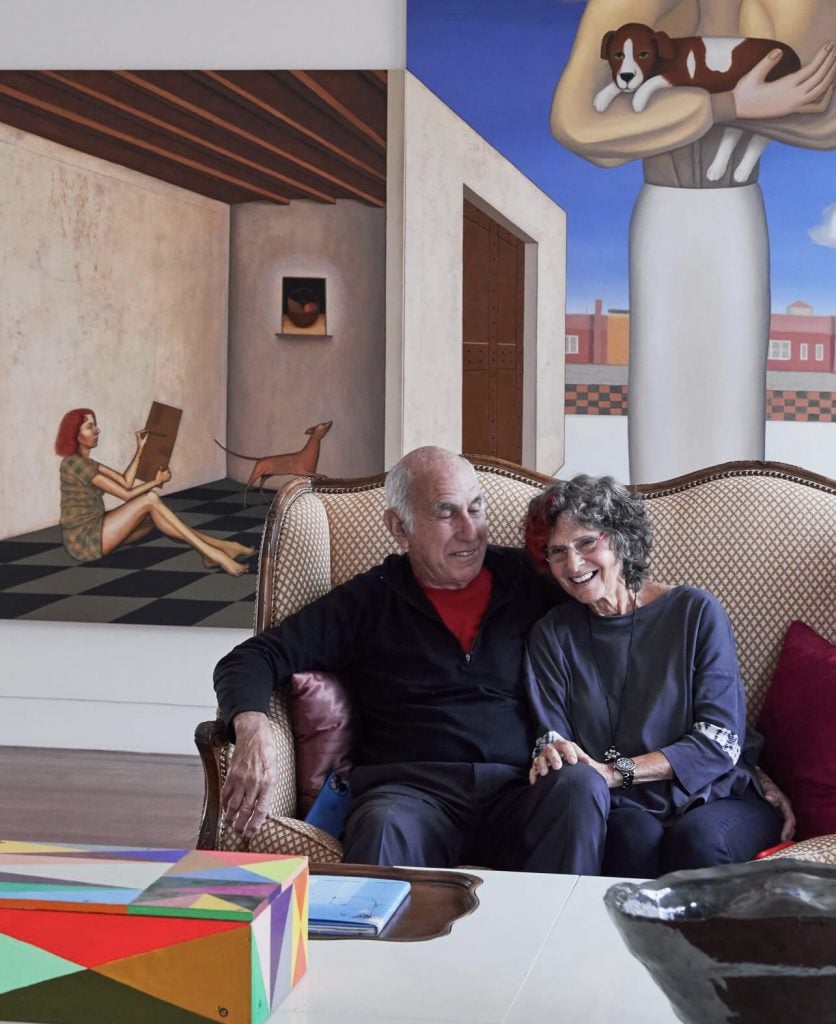
New York collectors Michael and Susan Hort. Courtesy: Susan Hort
“She used to be ridiculously successful,” Michael said. “Then she got married, moved up to Vermont where her husband was teaching, and disappeared. When she started again, it was darker, it wasn’t as good. She plateaued completely.”
Their exhibition renewed interest in Purdum’s work. Brigitte Mulholland, a former director at Anton Kern, spotted the painting and included the artist in a group show that launched her new Paris gallery this summer. Then Tilton Gallery presented Purdum’s early paintings at Frieze Masters in London in October. Now, the artist is scheduled to have a solo show with Brigitte Mulholland in Paris in 2026, the gallery confirmed. “That’s the type of thing we are hoping to do,” Susan said about their pavilion in Chatham. “Maybe people will see the work and the artist will get a new career,” Michael said.
But even more importantly, the private museum will be a homage to the couple’s vision of collecting—as always on their terms.

